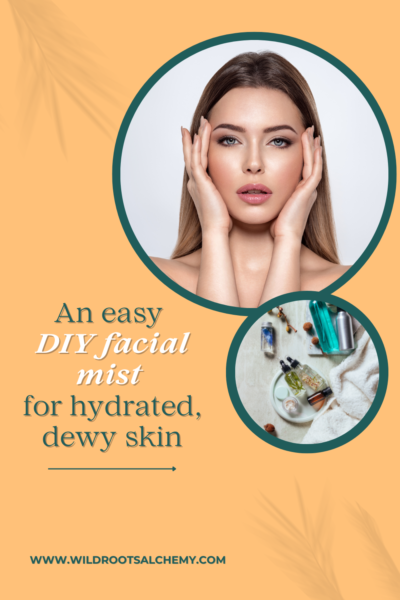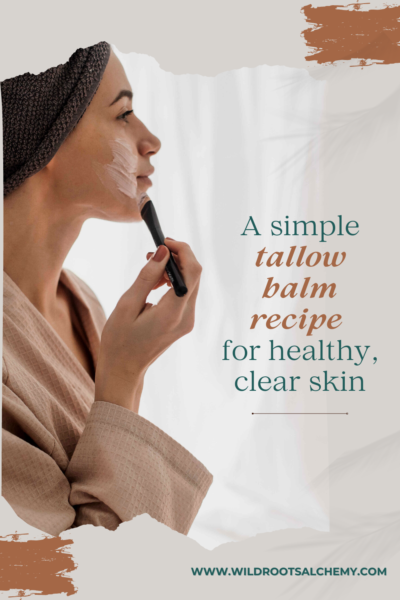
When it comes to hormonal acne, it can be challenging to determine which hormones are at play. You’ve probably been wondering, “Which of my hormones are actually imbalanced?!”
Your hormones are interdependent, so an imbalance in one hormonal system will inevitably affect the rest. This usually leads to symptoms of multiple hormonal imbalances–which can be confusing and frustrating!
Let’s talk about chronic stress for a moment, as an example of how multiple systems can be affected by a primary imbalance. Chronic stress primarily impacts your hypothalamic-pituitary-adrenal (HPA) axis, creating cortisol imbalances. However, this often leads to dysfunction in your hypothalamic-pituitary-ovarian (HPO) axis, messing up your estrogen and progesterone levels. Prolonged stress and HPA axis dysregulation also affects your blood sugar balance and insulin sensitivity, and can possibly affect your thyroid function.
See how all of your hormones are intricately interconnected?
This interconnectedness is why it’s important to look at and address all aspects of your endocrine system. But in terms of your hormonal acne, what was the initial root cause–the primary hormone to trigger the imbalance?
While most women with hormonal acne present with signs of multiple imbalances, many seem to have a primary imbalance that is driving their symptoms.
Let’s look at the 7 main hormonal imbalances that could be causing your acne!
Estrogen Dominance
Estrogen is responsible for “plumping up” your tissues (like your hips, butt, thighs, and breasts) and thickens your uterine lining every month in preparation for possible pregnancy.
Estrogen dominance is incredibly common and can be a hormonal cause of acne. Estrogen dominance occurs when there is too much estrogen in relationship to progesterone, either because of excess estrogen (due to extra adipose tissue or xenoestrogens like those found in plastics, conventional beauty products, and the birth control pill) or low progesterone.
Excess estrogen interferes with androgen metabolism, potentially leading to more sebum production and acne formation. Higher levels of estrogen also stress out your liver, making it less efficient at metabolizing and detoxifying hormones, and further perpetuating estrogen dominance. On top of that, your liver is responsible for clearing out all sorts of environmental toxins and cellular waste products. When your liver is taxed and can’t do its job properly, your skin suffers.
Estrogen Deficiency
Balanced estrogen helps to plump up your skin and keep it healthy, warding off skin issues like wrinkles and acne.
Estrogen binds to androgen receptors responsible for oil production, keeping androgens from binding and blocking extra sebum production. Low estrogen levels means that not only do you lose estrogen’s protective effects on the skin, but androgens now have a free pass to stimulate those sebum receptors.
Low estrogen levels occur naturally in menopause, but your estrogen can be lower than normal even if you’re menstruating. Causes of low estrogen include nutritional deficiencies and hypothalamic-pituitary-ovarian (HPO) axis dysfunction.
Progesterone Deficiency
Progesterone starts to rise in the second half of your menstrual cycle following ovulation, which is why symptoms of low progesterone are typically worse leading up to your period.
Progesterone is responsible for regulating the conversion of testosterone to DHT. If you have low progesterone, you’ll have more acne-triggering DHT circulating around.
Progesterone metabolites also act on your GABA receptors, helping to keep you calm. Higher levels of stress and anxiety due to low progesterone can perpetuate and worsen acne.⠀⠀⠀
Low progesterone levels are commonly due to a lack of ovulation, estrogen dominance, poor ovarian function, or HPA (hypothalamic-pituitary-adrenal) axis dysfunction.
Androgen Excess
Androgens (testosterone and DHT) promote sebum production, creating oily skin and an environment ripe for acne formation when these hormones are unopposed. Proper levels of testosterone promote a healthy libido and mood, but in excess, androgens can lead to hair loss, unwanted hair growth, and acne.
High androgens commonly occur in a condition called PCOS (polycystic ovary syndrome), but they can be elevated even in women without the condition. Certain conditions and other hormonal imbalances can cause a reduction in a protein called sex hormone binding globulin (SHBG), which increases the amount of circulating testosterone.
Low Thyroid Function
Thyroid hormones (T4 and T3) are responsible for regulating metabolism in every cell and organ in the body. Low thyroid hormone levels are found in hypothyroidism, but if you have symptoms of low thyroid function with normal lab values, you may have functional hypothyroidism or thyroid hormone resistance.
Thyroid hormones play a role in the conversion of dietary beta carotenes into vitamin A, which is essential for skin health. Low thyroid function is typically associated with a vitamin A deficiency; a nutritional deficiency that is associated with acne and can be improved by optimizing thyroid function. Low thyroid function also causes a progesterone deficiency, which is known to contribute to acne formation.
Causes of functional low thyroid function include insulin resistance, HPA axis dysfunction, nutrient deficiencies, poor digestion, stress, chronic inflammation, and immune system dysregulation.
High Cortisol
Cortisol is your body’s primary stress hormone, but it has a host of other functions including regulating your sleep/wake cycle. Cortisol release follows your circadian rhythm, with higher levels in the morning and lower levels in the evening. Cortisol is involved in blood sugar regulation, regulating blood pressure, and reducing inflammation.
Prolonged elevation in cortisol levels can lead to inflammatory conditions like acne. Acne due to high cortisol levels is often worsened by stress.
High cortisol levels are associated with prolonged stress and HPA axis dysfunction, as well as chronic inflammation.
Insulin Resistance & Blood Sugar Dysregulation
Insulin is released by your pancreas and is responsible for regulating blood sugar levels. High blood glucose levels (like after eating too much sugar) cause insulin levels to spike. Eventually your cells don’t respond as well to the insulin, causing your pancreas to secrete even more insulin to regulate your blood sugar levels. This leads to insulin resistance and blood sugar dysregulation.
Insulin resistance is a common trigger for acne. High levels of insulin increase androgens in the body, which can lead to acne. High insulin levels also reduce levels of sex hormone binding globulin (SHBG), which promotes estrogen dominance and frees up acne-triggering androgens. Insulin resistance is commonly seen in conditions like PCOS.
You don’t have to be overweight to have insulin resistance and blood sugar dysregulation, nor do you have to have PCOS. Your level of insulin resistance can vary, but even mild resistance can affect all of your other hormones. Causes of insulin resistance include certain eating and lifestyle habits, high blood sugar and blood sugar fluctuations, and chronic inflammation.
Interested to know what your primary hormonal imbalance could be? I’ve created a FREE quiz to help you figure it out! You’ll discover your primary hormonal imbalance, and you’ll receive my free ebook (7 Steps to Healing Acne Naturally) along with a ton of awesome tips geared towards your specific imbalance.
Did you take the quiz?? Let me know what your result was in the comments below!





